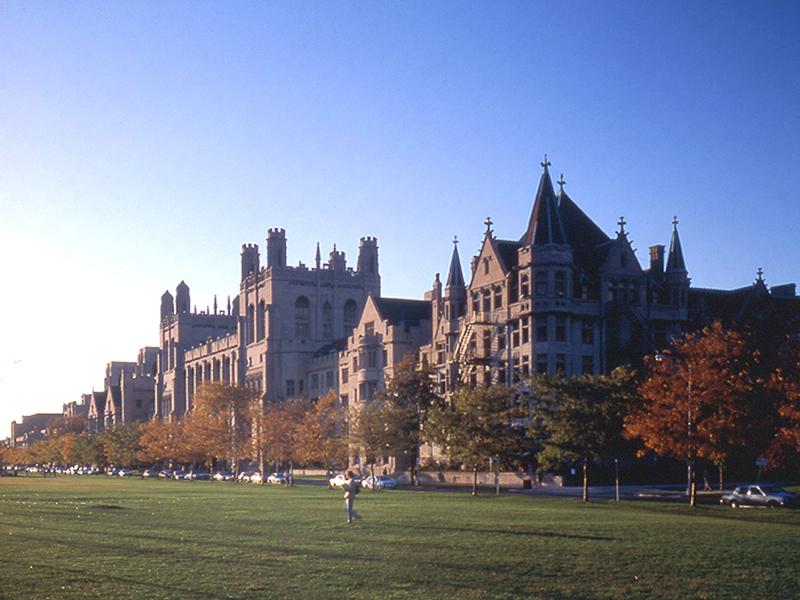Fall is in the air. Friends and family are moving their loved ones into cozy dorm rooms and apartments.
Students are marching off to classes, excited about learning, or eager to see if that one cutie will be sitting across from them the whole semester.
The leaves are changing. Love and friendship are blooming.
And the debate over trigger warnings and safe spaces is kicking up its usual Internet dust storm.
The University of Chicago caused controversy this year by issuing a letter to its Class of 2020 saying that the school does not support “so-called trigger warnings” or “intellectual safe spaces”.
The school cited its tradition of free expression and opposition to censorship as its reasoning, implying that trigger warnings inhibit rigorous debate and creative inquiry.
Some saw the letter as insensitive and misguided.
Others view the letter as a bold declaration against censorship and a push for necessary, if uncomfortable, exchange of ideas.
Whatever the letter’s actual intent or results maybe, the University of Chicago has shown a harmful yet common misunderstanding of what trigger warnings and safe spaces actually are.
Safe spaces are not an invention of the “politically correct” Internet-driven generation.
Safe spaces on college campuses reach back as far as the 1960s.
If you know a thing or two about the political turmoil of the 60s, you will recall that being an activist in the public sphere often put one at risk of serious violence.
Safe spaces were both physical and intellectual places where minorities and their supporters could organize and develop their viewpoints separated from the racism, sexism, classism, and homophobia of the general public.
From their very conception, safe spaces have not been about suppressing free speech.
They have made free speech possible.
Today, safe spaces are public areas with some expectation of privacy, where those with marginalized identities can retreat from those who persecute them.
This can be an office, a dorm room, or a center.
These spaces are not barred from all forms of disagreement, but offer members of a discriminated group to debate without interference of those who wish them at best silence and at worst violence.
With all the discussion and conflict surrounding race, gender, and sexuality in our world today, safe spaces are still need on college campuses.
Trigger warnings are perhaps even more controversial and misunderstood than safe spaces.
So let us break down the term. To trigger is to incite, intentionally or unintentionally, severe emotional distress or aggravate past trauma in someone’s life.
Triggers are most often associated with people living with PTSD, epilepsy, or major anxiety and depressive disorders.
A trigger is not a subject that merely makes someone uncomfortable, as people so often assume.
Triggers are not to be exaggerated.
They are only to be assigned to situations where someone with prior issues is in danger of emotional harm.
For example, images of self-harm can trigger someone with a history of suicide idealization to harm themselves or graphic depictions of sexual assault can induce flashbacks in survivors of sexual abuse.
Triggers do not apply to the general population, but instead specific groups with specific experiences.
Now, what is meant by the “warning” part of trigger warnings?
A warning is not a form of censorship.
Just because a subject may trigger a student in a class does not mean a professor cannot teach on that subject.
The professor’s responsibility is to provide notification of possible triggers before the subject is taught.
The students then have the power to decide whether or not they individually can handle the subject.
They then have the chance to mentally prepare themselves for a subject they are sensitive to or may choose to opt out of that class period.
Trigger warnings do not stop professors or students from discussing controversial subjects.
They ensure that students of all experiences and backgrounds can feel safe going to class and learning on campus.
In the coming semesters, Gustavus will undoubtedly have to deal with its own debates over trigger warnings and safe spaces.
I urge Gusties not to assume or take the matter to extremes.
Consider that your fellow classmates are not being oversensitive or bulking at any amount of discomfort.
Proceed with the knowledge that everyone around you has their own issues and struggles.
If a trigger warning does not apply to you, great, but do not tell someone else what they should or should not be able to handle.
Trigger warnings and safe spaces do not censor or oppress, but allow for all people to safely learn and develop their ideas on campus.

Yes, everyone deserve to stay safe in college/university. At present, every college & university dorm rooms are safe and secure to live.